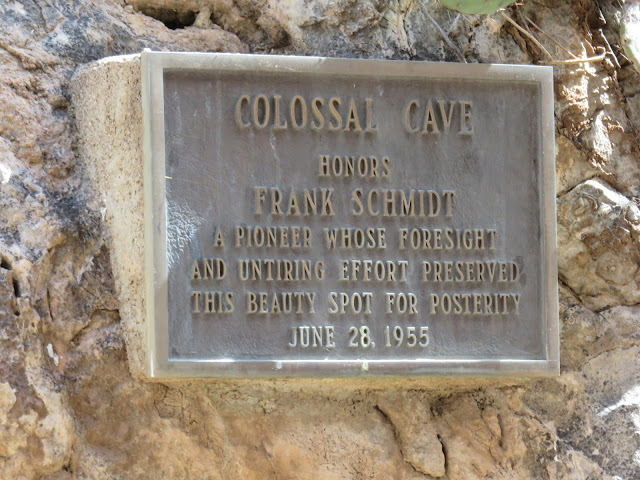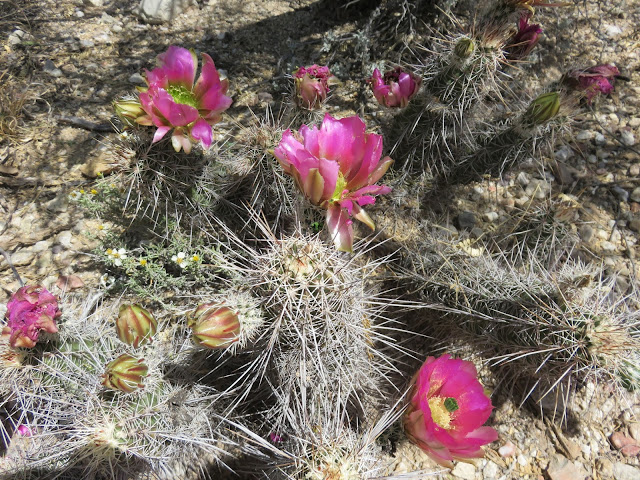Colossal Cave is yet another cave system located near Tucson offering guided tours by the staff at Colossal Cave Mountain Park. While not as stunning as the Kartchner Caverns we visited last month, the 1-hour guided tour was still interesting and informative. This large cave system contains 3.5 miles of mapped passageways, and was “discovered” by Soloman Lick in 1879, although the Hohokam, Sobaipuri, and Apache Indians used the caves from 900 to 1450 CE. Like Kartchner, Colossal is a warm cave with temperatures inside averaging 70-degrees Fahrenheit year round. But, unlike Kartchner, this is a dry cave, which meant we were allowed to take pictures inside.
Originally
Lick used the cave to mine the bat guano, utilized for a variety of purposes
ranging from cosmetics to weapons. But it didn’t take long to deplete the store
of guano, and the tunnels built for this purpose were later abandoned. The
caves were also used as hideouts for bank robbers and other criminals, who
weren’t all that careful about what they left behind for discovery.
Thanks
are due to the men of the Civilian Conservation Corps (CCC) for making the
improvements inside Colossal Cave from 1934-1937, which include stone paved
paths, railings, steps, and lighting, as well as constructing buildings and
picnic areas under the supervision of State Park personnel. These men lived in
a camp supervised by U.S. Army personnel where they engaged in educational,
sports, and recreational activities. They even turned part of the cave into an altar
where weddings were performed for the men, and where couples can get married
even today.
In
addition to the caves, there are other attractions at Colossal Cave Mountain
Park including the La Posta Quemada Ranch Museum, horseback trail rides, picnic
and camping facilities, a butterfly garden, and hiking trails. After our cave
tour, we drove the short distance to the ranch for a short exploration of the
trails and a picnic lunch.

























No comments:
Post a Comment